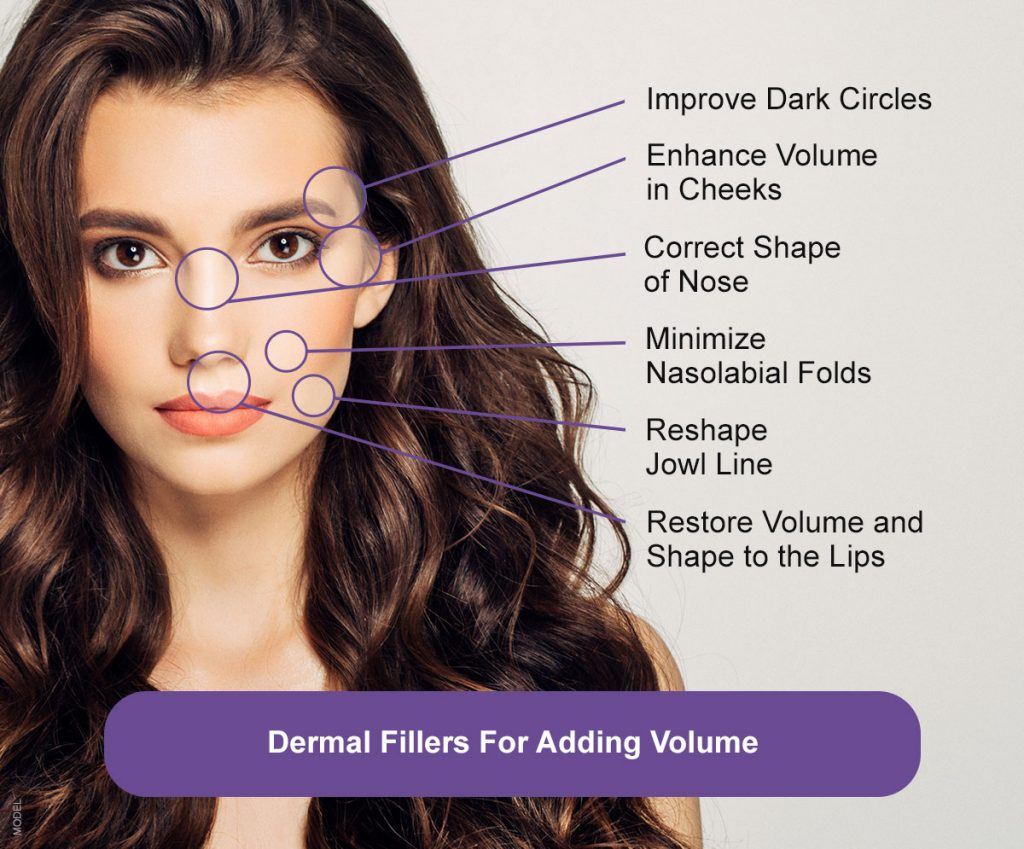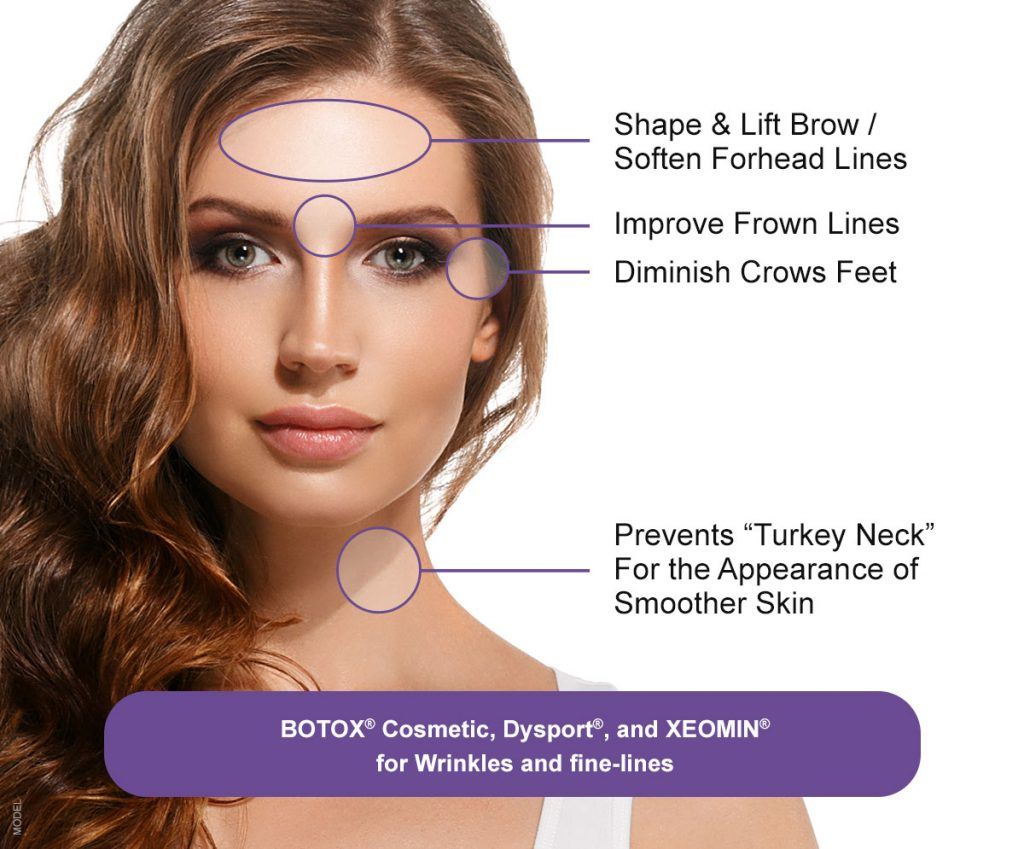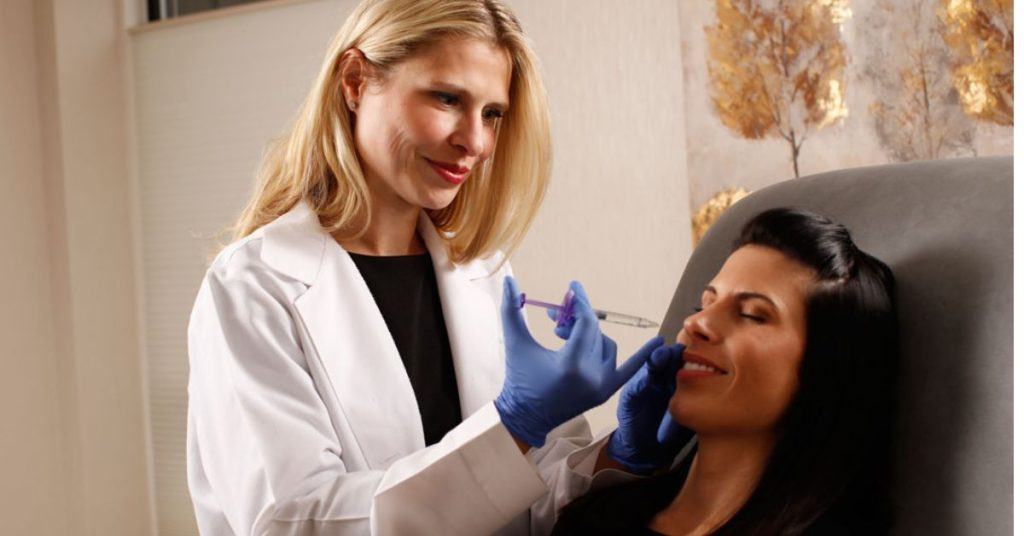There is a fine line between different injectables…get it? Anyway, there are a variety of treatments to smooth wrinkles, but do you know the difference between the various injectables, from dermal fillers to BOTOX® Cosmetic and other neuromodulators? Our Rochester, NY, dermatology professionals provide a brief breakdown so you can educate yourself and be ready to ask our team the questions that are most important to you.
All of the dermal fillers we offer are the most popular in the industry, restoring youthfulness, plumping thin lips, and softening facial creases and lines. The other wrinkle-smoothing injectables include names that you’re sure to know: BOTOX® Dysport®, and Xeomin®.
What is a dermal filler?
Valid question. Dermal fillers injections add volume to targeted areas to smooth, lift, and enhance facial contours. Treatment is sometimes called a liquid facelift because it gives you a youthful appearance with no anesthesia or downtime.
JUVÉDERM® products, Restylane® products, Revance® TEOXANE RHA, and BELOTERO BALANCE® are made from a substance called hyaluronic acid, which naturally exists in the skin. When injected into the skin, the hyaluronic acid binds with water molecules, and in essence “fills in” wrinkles and folds, corrects volume loss, and enhances contours.
Sculptra® Aesthetic is formulated using poly-L-lactic acid (PLLA). Even though Sculptra is often called a filler, it restores volume by gradually stimulating the production of new collagen as the PLLA microparticles are absorbed. Sculptra can actually be used to add long-lasting volume to the buttocks.
Common areas treated with dermal filler

Fillers are extremely versatile, and can even be used on areas like the buttocks (see Sculptra) and the hands. But they are most commonly used to treat:
- Cheeks
- Chin
- Lips
- Nose
- Pre-jowl area
- Under eyes
Dermal fillers are so effective at smoothing and enhancing facial contours they earn a 93% Worth It rating on RealSelf.
What is the difference between dermal fillers and other injectables?
BOTOX®, Dysport®, and Xeomin® are all in a category of injectables called neuromodulators. They are purified proteins that work to block nerve impulses. This allows muscles to relax, effectively eliminating wrinkles and giving the face a rejuvenated look. These treatments are used to reduce the appearance of deep lines and wrinkles caused by repetitive muscle movement, most commonly on the forehead or around the eyes.Common areas treated with neuromodulators
Neuromodulators are the most popular nonsurgical aesthetic treatment for a reason—they work! We commonly use BOTOX and its “cousins” on:
- Vertical lines between the eyes
- Droopy brows
- Crow’s feet around the eyes
- Horizontal forehead lines
- Bunny lines
We also use neuromodulators to treat vertical lip lines, neck bands, and a dimpled chin. Read more about 4 of the best areas to use BOTOX in this related blog post.

What wrinkle-smoothing treatment is best for me?
Well, it’s not always a choice of one or the other – most of our patients use a combination of both treatments to achieve optimal results. Dermal fillers are often used in conjunction with other skin rejuvenation treatments, including injections, chemical peels, microdermabrasion, or Fraxel® skin resurfacing.
Talk to our team about your goals, the areas you’re looking to improve, any past treatments, and we’ll provide a realistic recommendation for you.
Schedule Your Appointment Today!

Leave a Reply